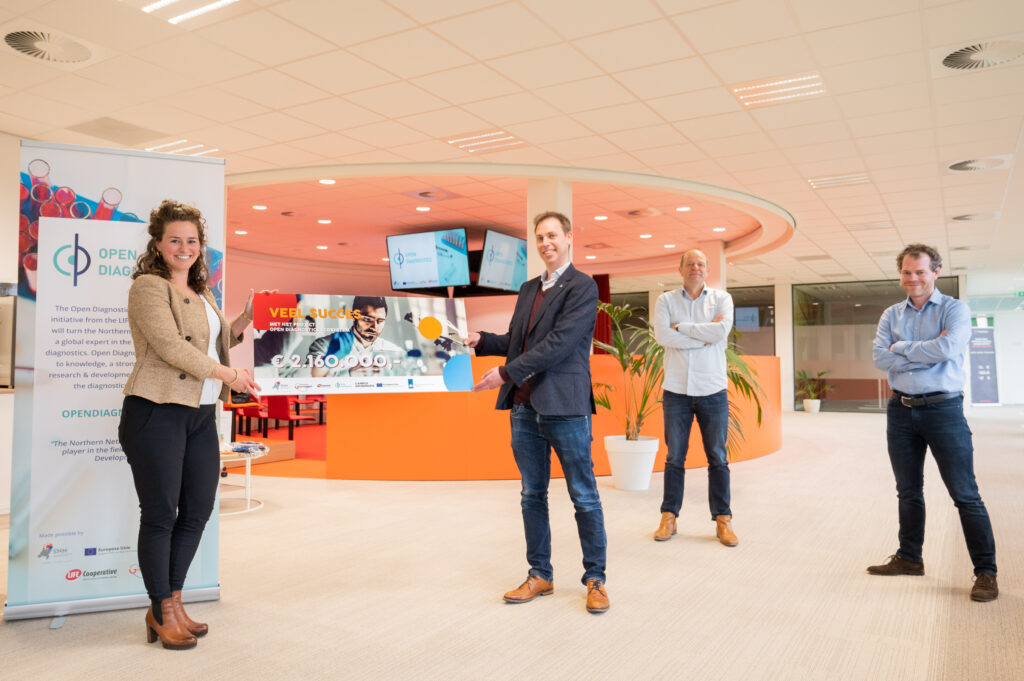Detact Diagnostics is based in The Netherlands and founded in 2014, developed a novelle and disruptive bacterial detection platform/technique that is truly innovative, highly sensitive, specific and fast (seconds – minutes) that lends itself to application development in healthcare and food. Within the Open Diagnostics ecosystem Detact Diagnostics is able to accelerate their research and development, and to develop new diagnostics. Detact Diagnostics is the first project in the Open Diagnostics Ecosystem and where part of the official moment where Open Diagnostics received more than 2 million.
Detact Diagnostics is a developer of diagnostic tests for the healthcare and food sector. In recent years, Detact Diagnostics has developed a platform technology to detect the presence of proteases (which are specific for bacteria and viruses).
In this project, Detact wants to develop technology to help doctors / healthcare providers make a diagnosis. A diagnostic test is being developed to detect in synovial fluid and peritoneal fluid bacteria, both “Gram negative” bacteria such as Pseudomonas aeruginosa and “Gram positive” bacteria such as Staphylococcus aureus. In addition, we want to develop a spectrometer to be able to do point-of-care detection with a handy reader, whereby, for example, a link can be made directly with the electronic patient file.
The diagnostic test is based on a so-called peptide (a short chain of specific amino acids) with a light-emitting molecule at one end and a light-absorbing molecule (quencher) at the other. In the absence of the target, the chain remains intact and no light is released. However, in the presence of the target, the peptide is “cut”. The distance between the light-emitting and light-absorbing molecule then increases, so that light is released freely. We collect this light and measure it, the amount of light released gives the result. Depending on the protease that is present (which are specific for certain bacteria or viruses) we can adapt the chain. With a detector it is possible to use the test as a very practical, point-of-care, test that can be used at any desired location.

